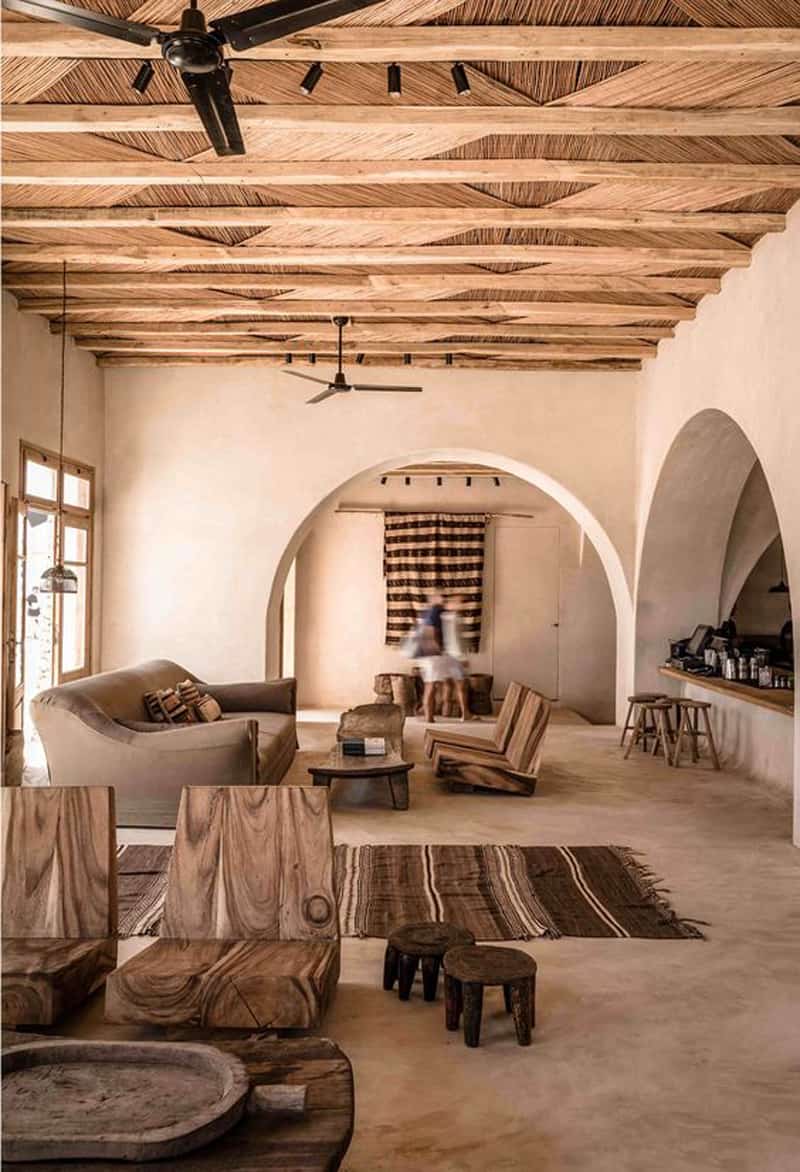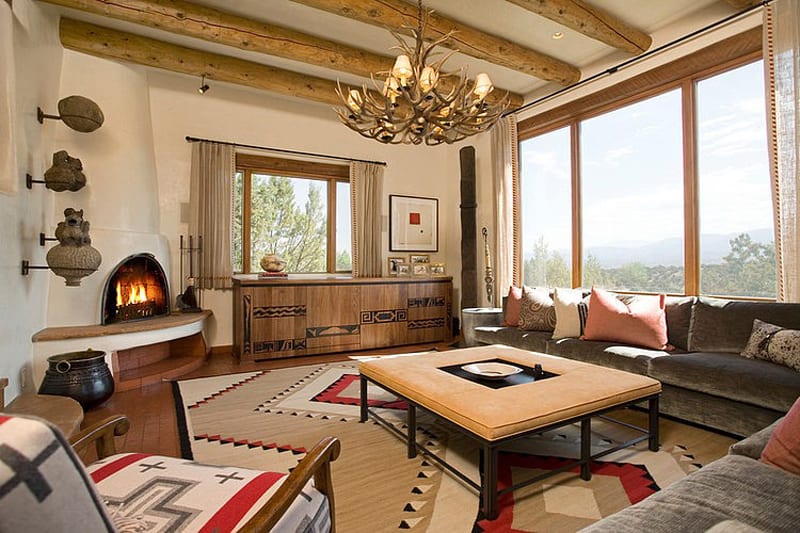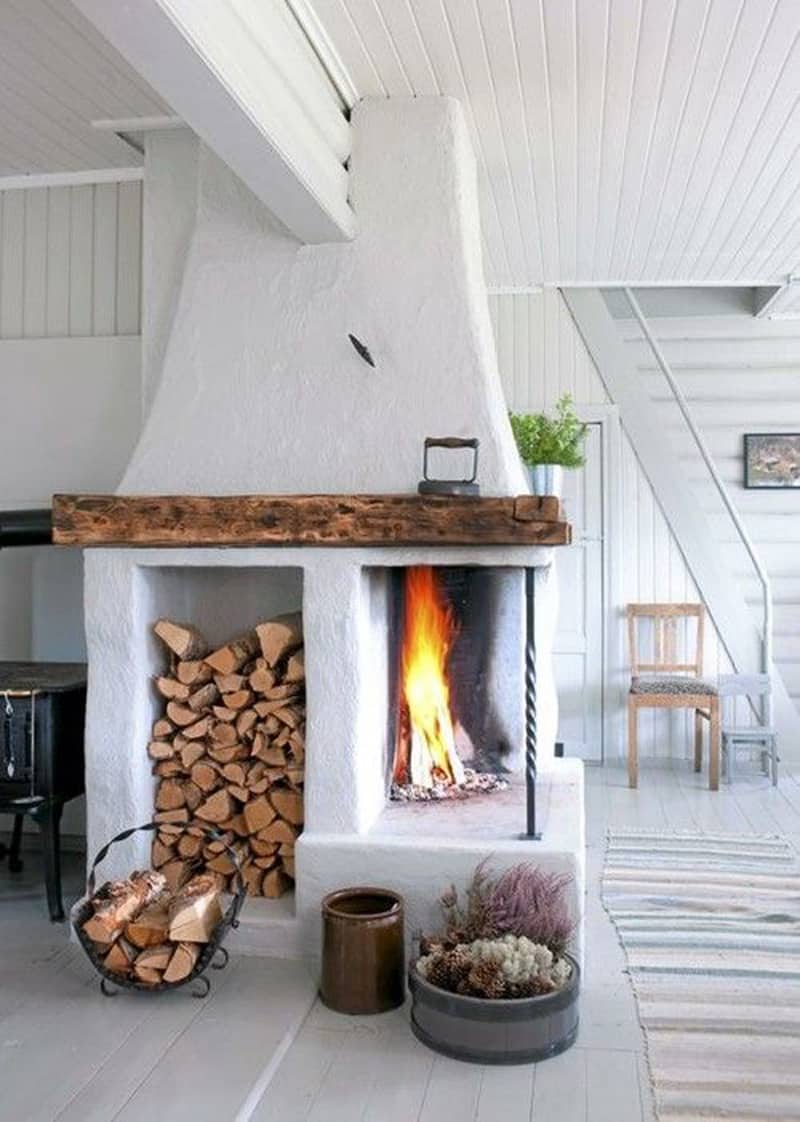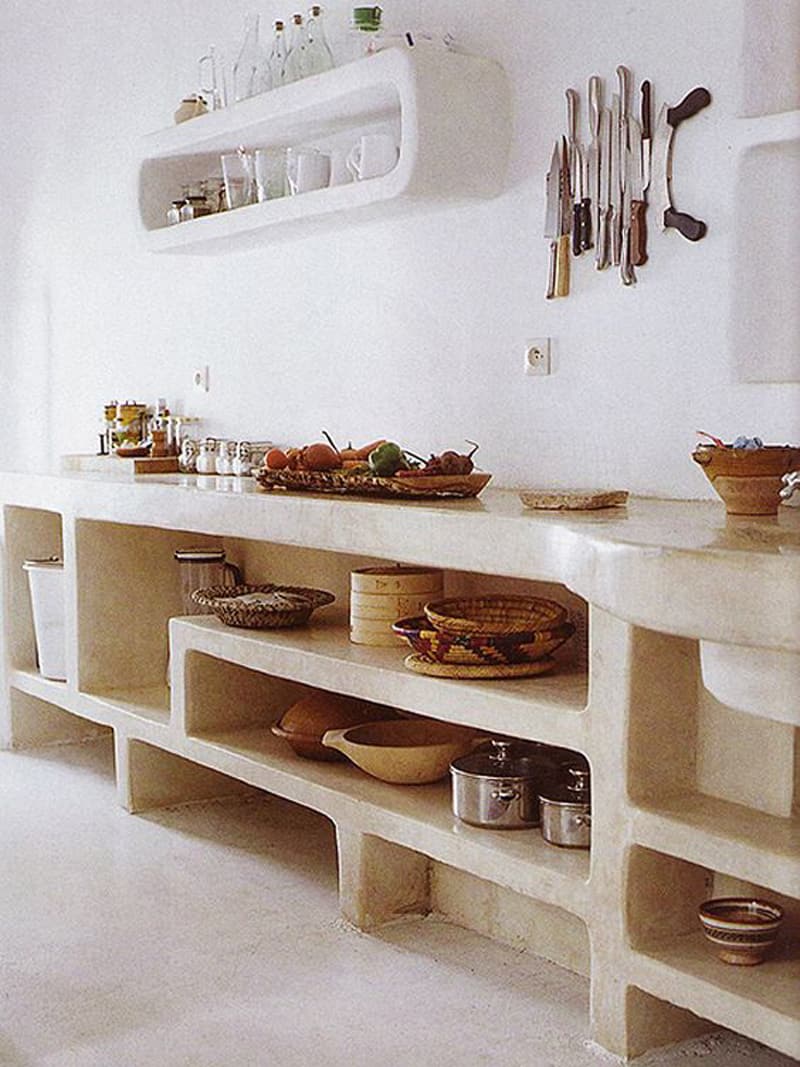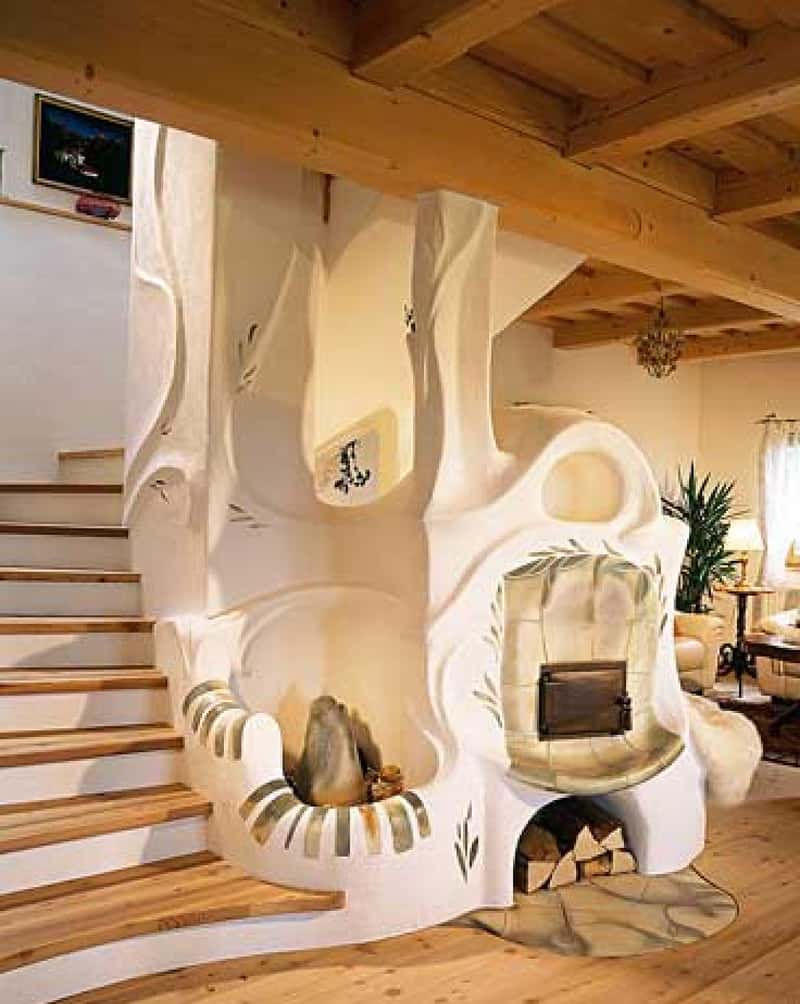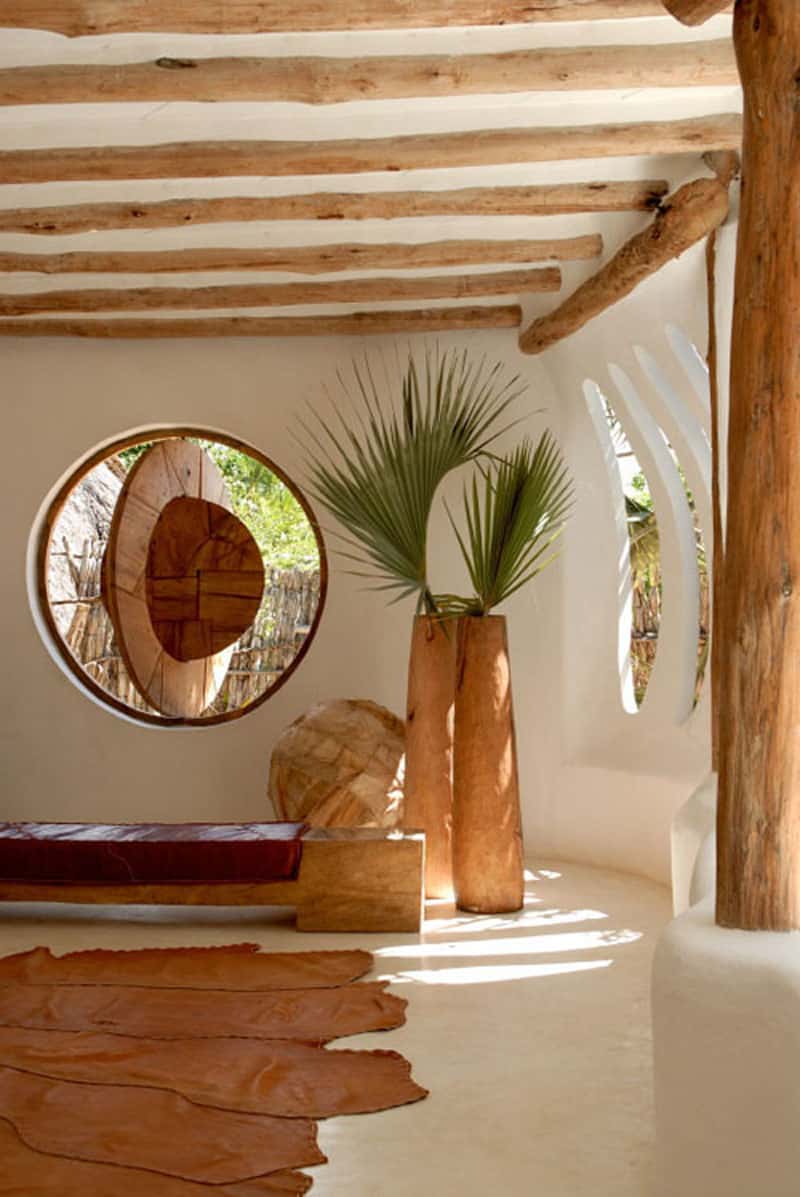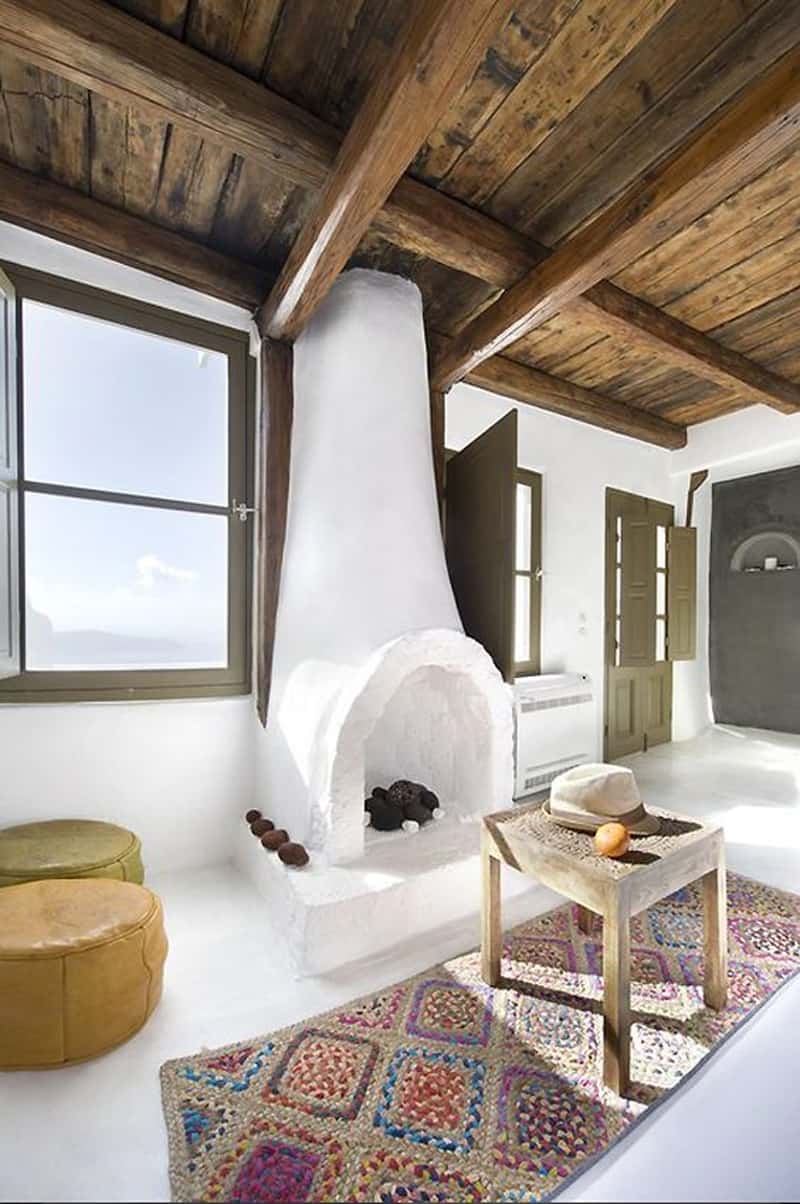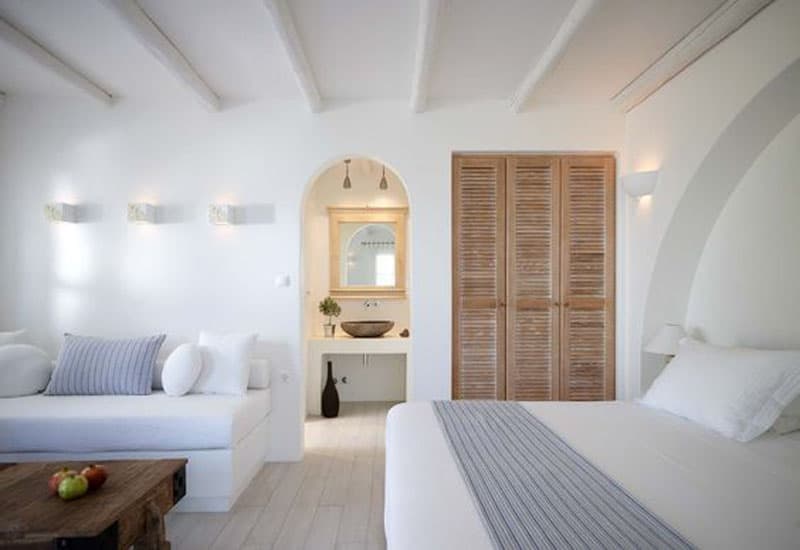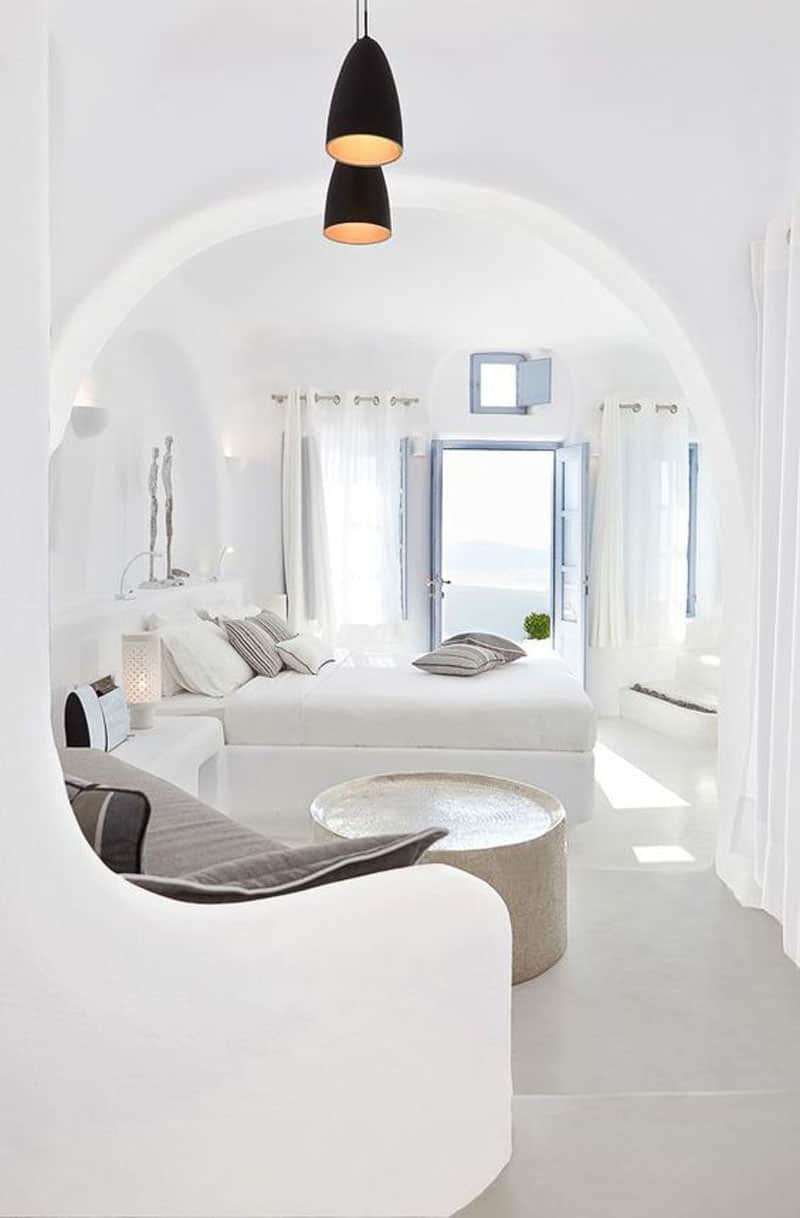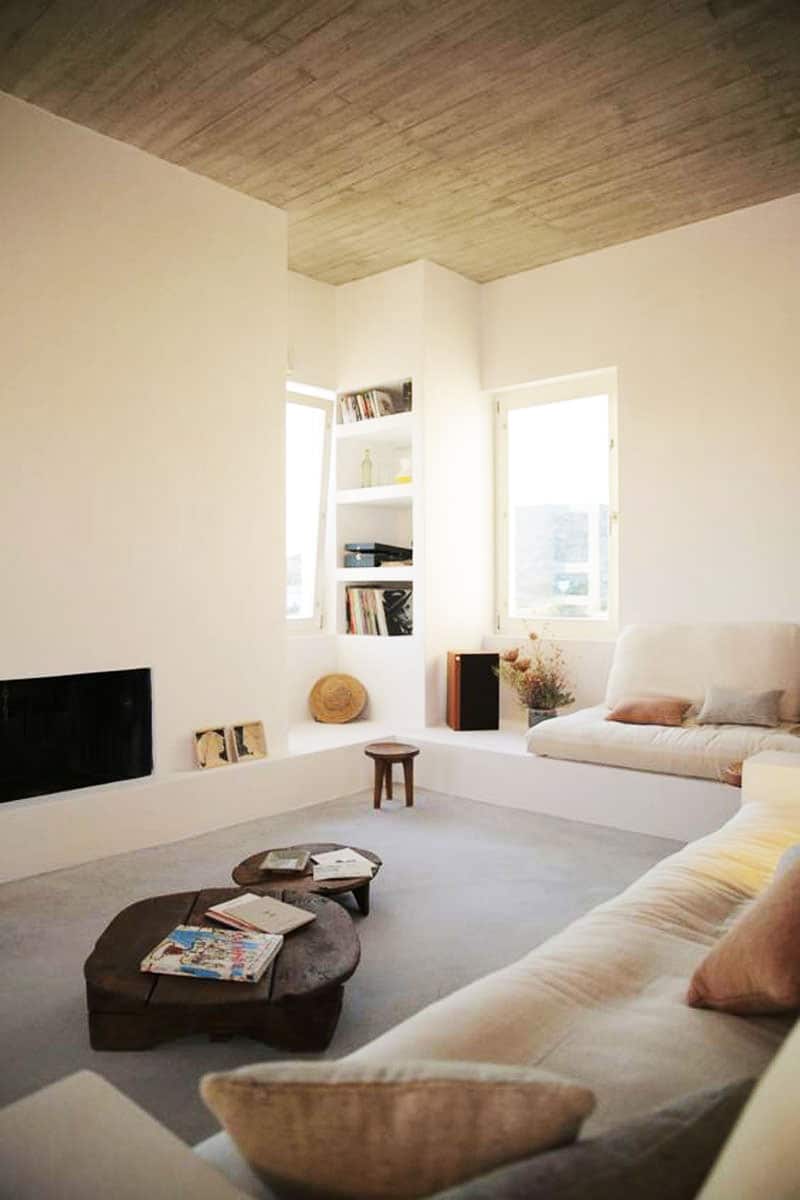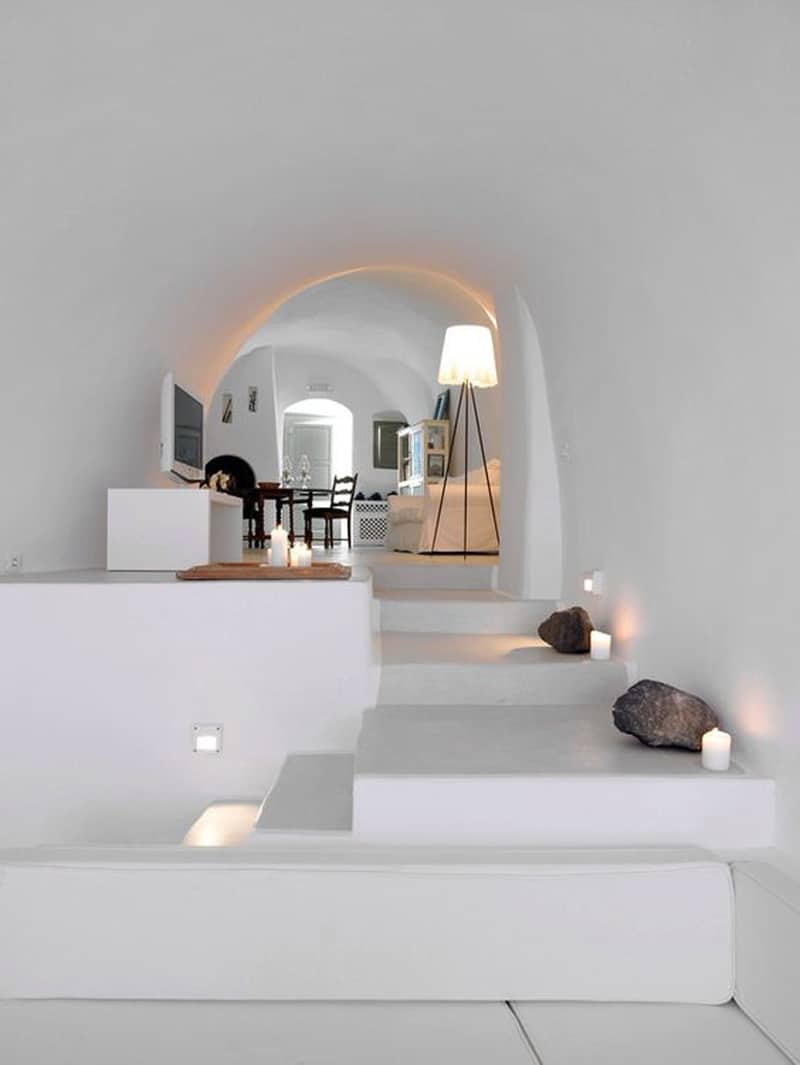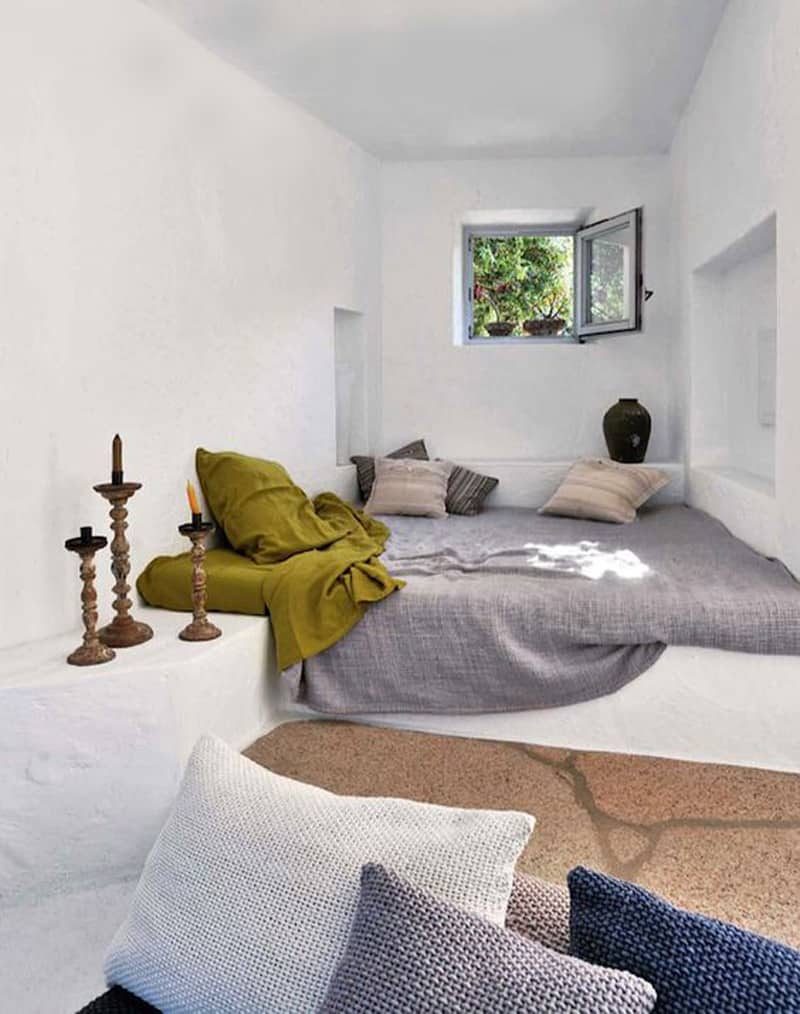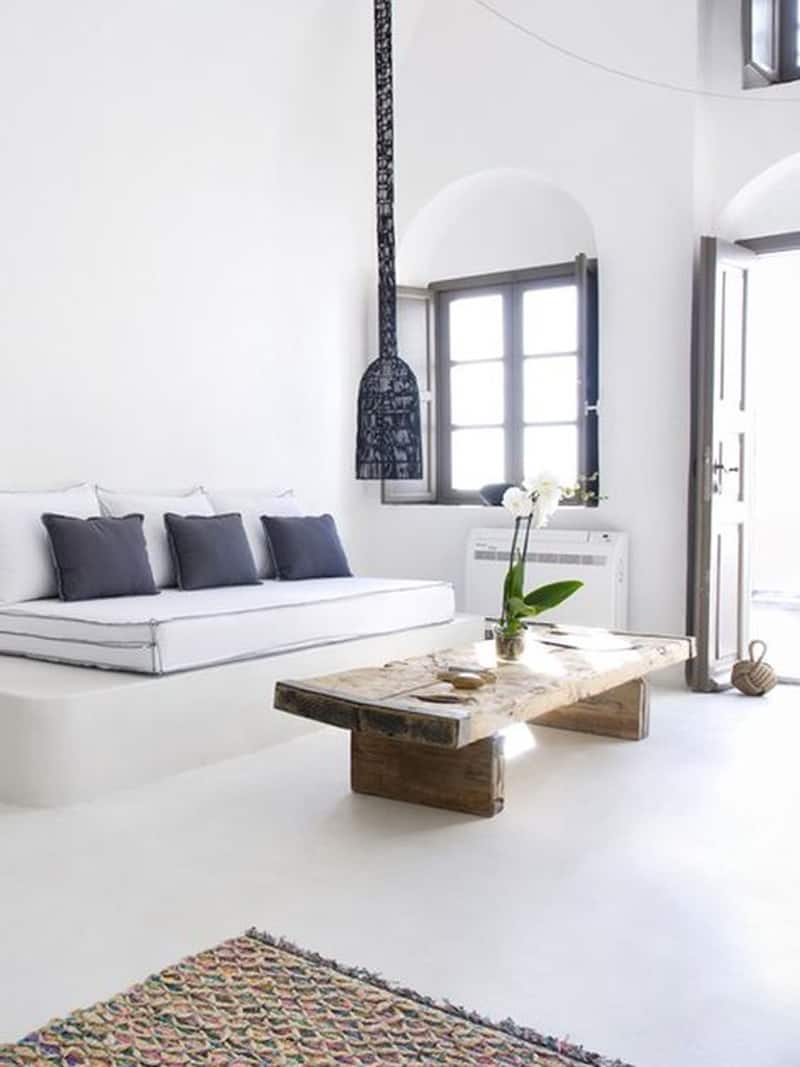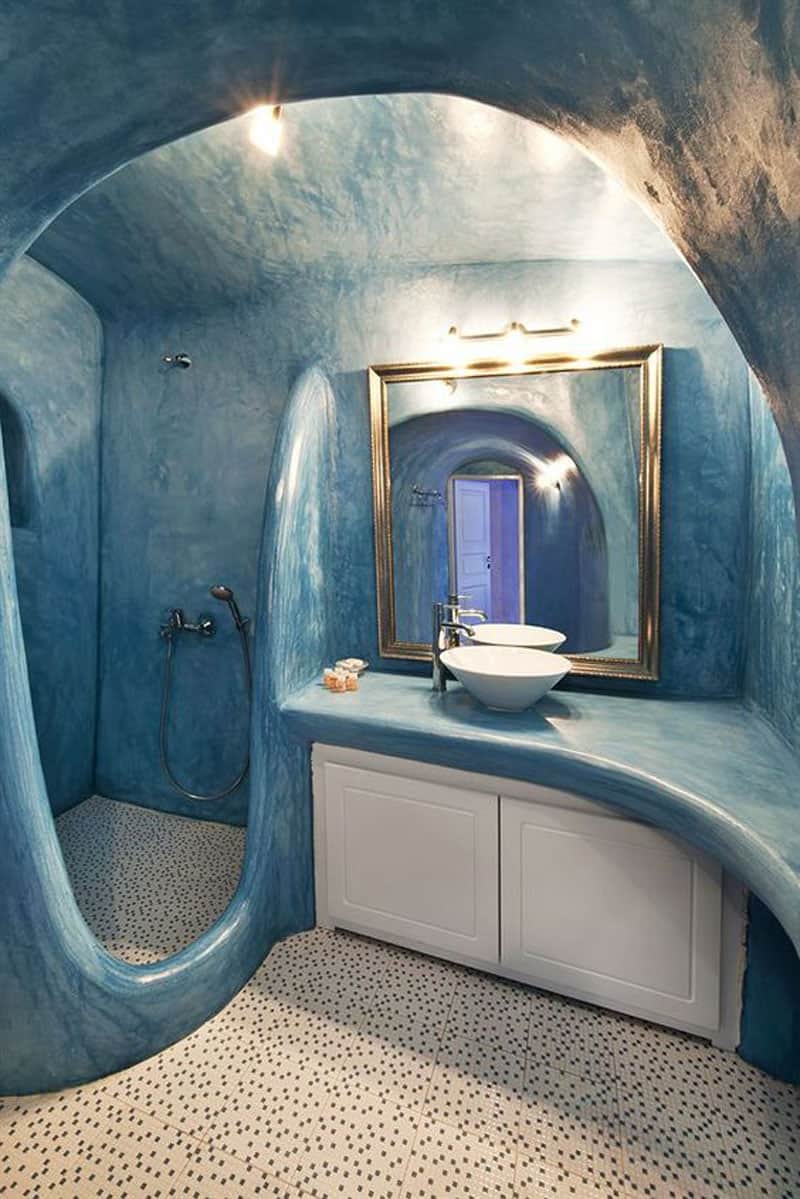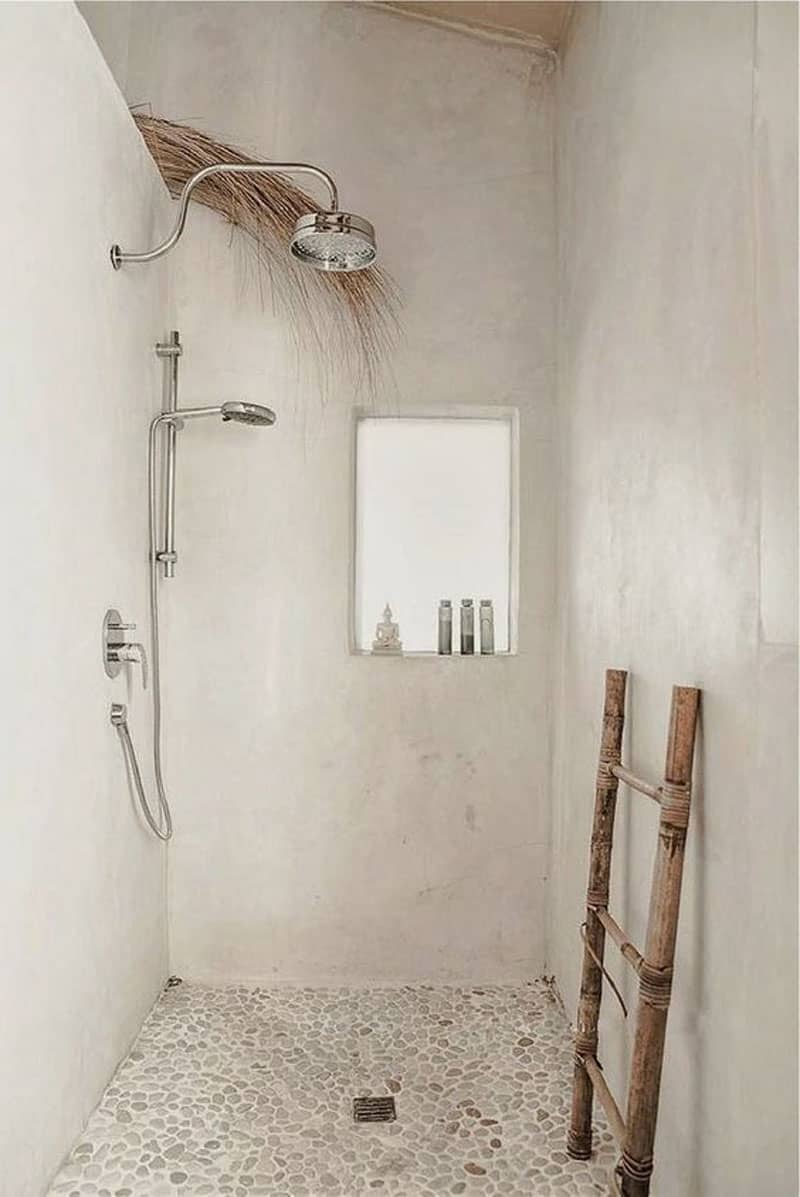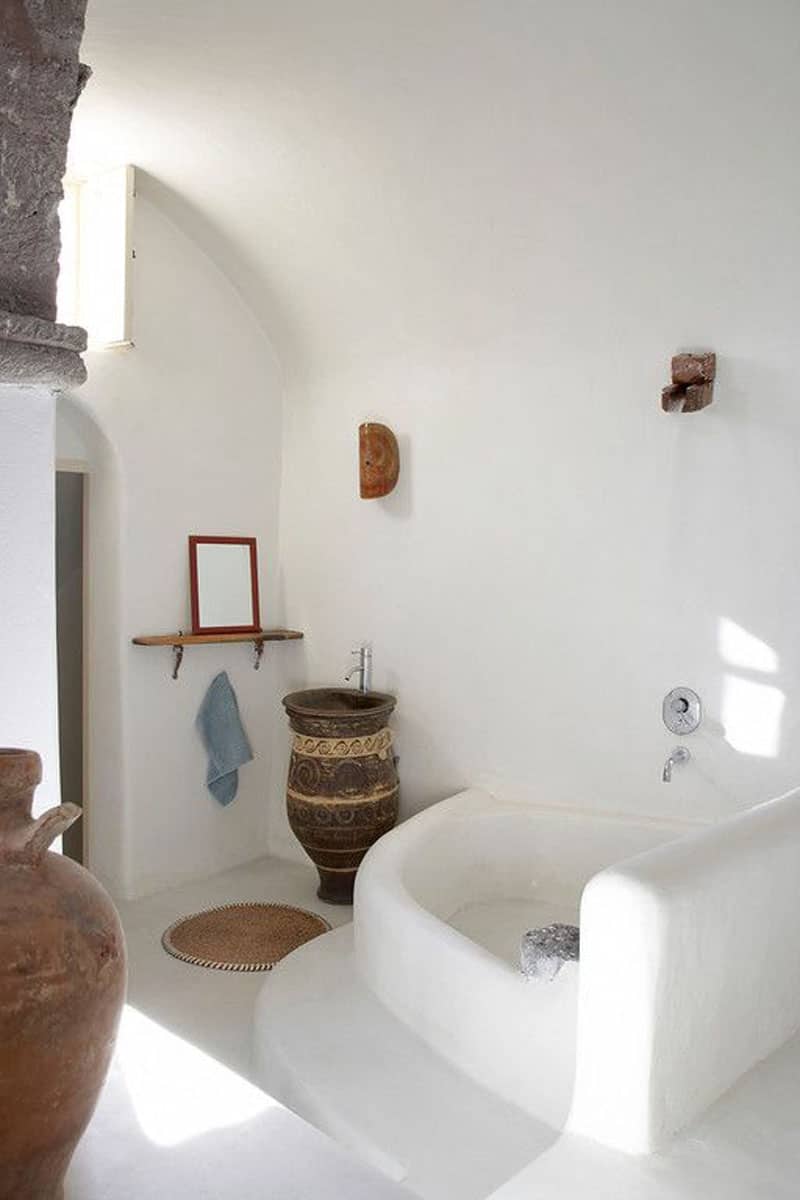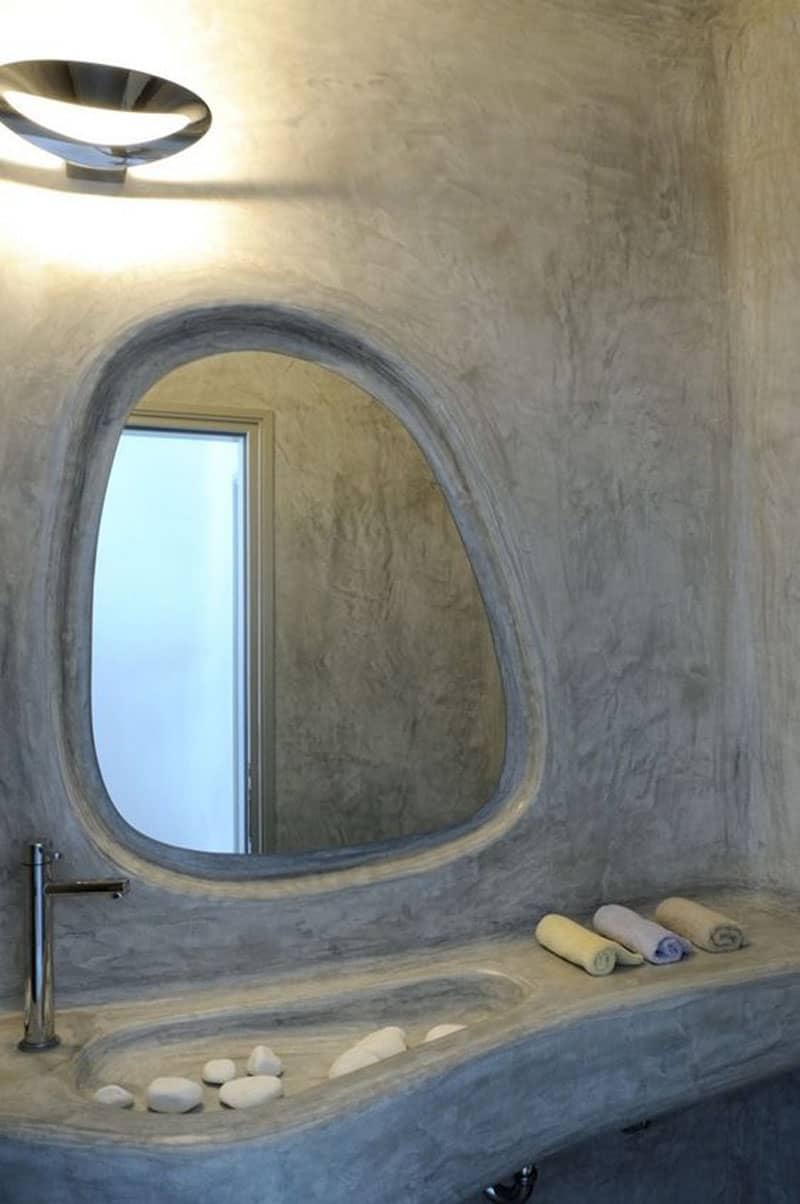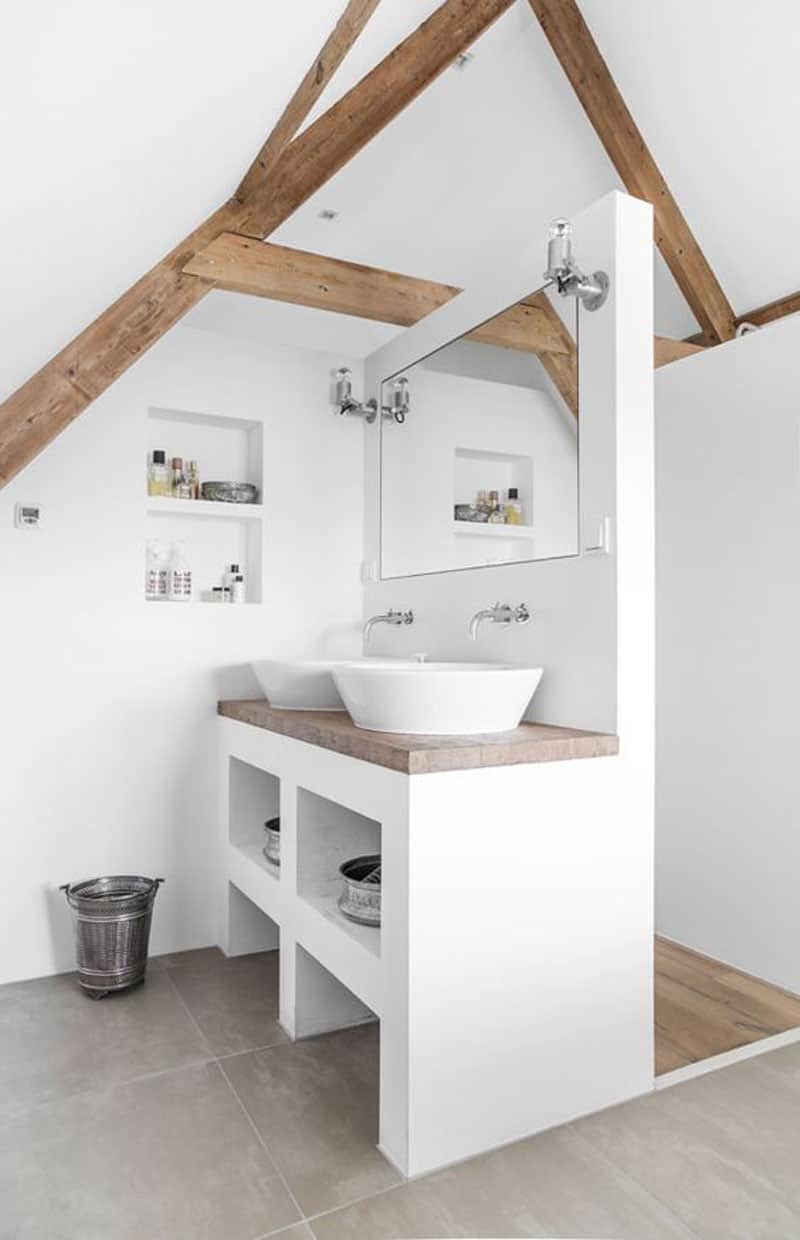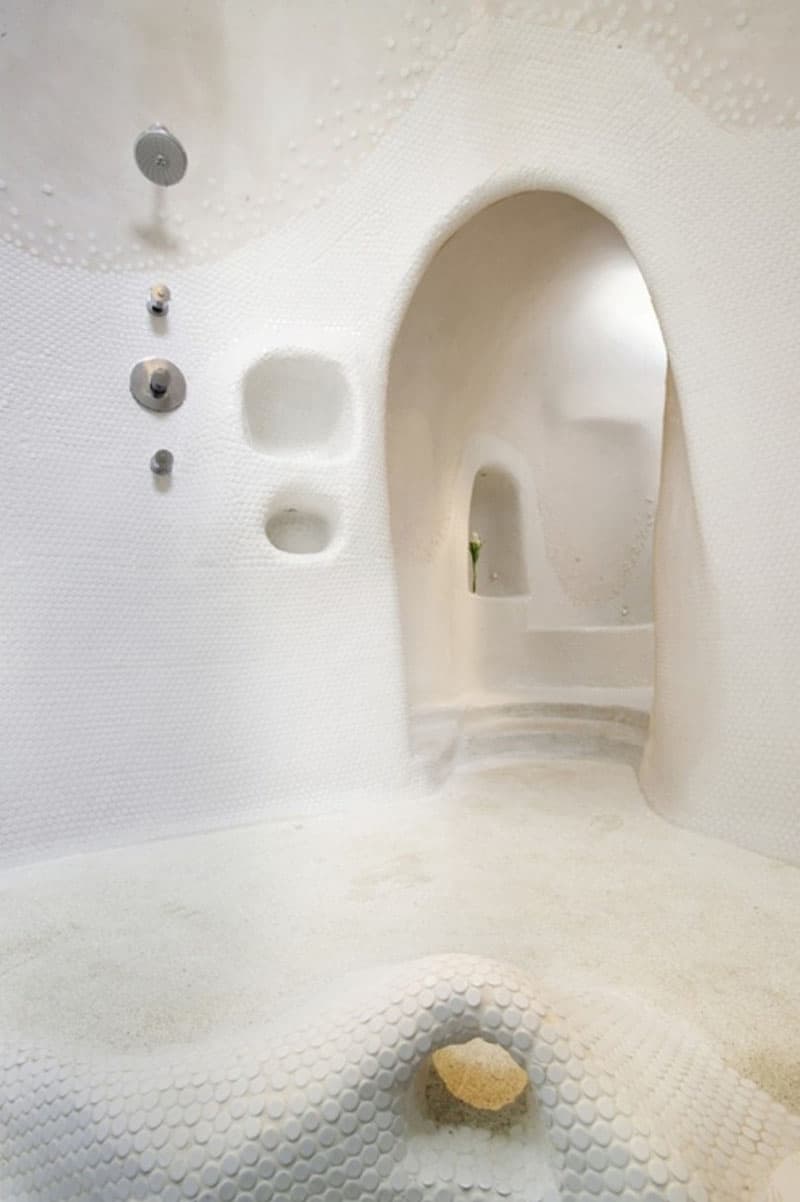Your cart is currently empty!
Tag: sustainable
-

2017 Slow Living Summit #2: Permaculture & Economic Sustainability, Mark Shepard
PLENARY 2: Permaculture and Economic Sustainability: Making It All Connect – with Mark ShepardPermaculture may be a buzz word or a trend that we are all hearing, but what does it all mean in relationship to economic sustainability? Join Mark Shepard for this presentation that connects permaculture with the realities of economic sustainability faced by food and ag entrepreneurs.
-

12 Permaculture Fishpond
Please help me grow the Garden of Eden, spread Permaculture to the people and spark a 21st Century Uprising!!!
https://www.patreon.com/MajinBen -

Thriving Backyard Food Forest, 5th Year Suburban Permaculture Garden
The Backyard Permaculture Food Forest is now producing hazelnuts, grapes, european pear, asian pear, raspberries, strawberries, eggplants, and the list goes on and on!!Subscribe: http://www.youtube.com/user/thepermaculturgarden?sub_confirmation=1
Facebook: https://www.facebook.com/james.prigioni
LAWN TO HIGH PRODUCTION FOOD FOREST: https://youtu.be/7ByAh_0CIW8
CUCUMBERS, Everything You Need To Know! https://youtu.be/2dq2OQsFCjM
5 TIPS FOR BUILDING HEALTHY SOIL: https://youtu.be/7-Tyz7fGeZo
-

Permaculture Paradise: Val and Eli’s Garden!
Val and Eli take us on a tour of their magical permagarden in Jacksonville FL. They have created a wonderful, natural space filled with self-sustaining fruits, vegetables, herbs, medicines, colors, water, fragrances, and wildlife. This is the very best fast food!View more permaculture videos here: http://www.youtube.com/playlist?list=PLA302F7D0CEA4F65A
Val can be reached at 904-476-6388, www.meetup.com/Permaculturejax.com, and at www.thefoodparkproject.com.
-

Permaculture Paradise: Alex Ojeda’s Fertile Back Yard!
Take a tour with Alex as he shows you how his permaculture forest garden grows. Get more info at https://www.facebook.com/groups/376132752470842/ (Permaculture Jax) and www.starwalkerproject.com. -

Man Quits Job in Finance to Create Incredible Permaculture Property – From Finance to Farmer
Andrew Martin once worked in the finance industry in Australia, but after learning about the true state of the world as peak oil and climate change begin to take effect, he knew he had to leave that unsustainable lifestyle behind and do something useful to help heal the earth and to be more resilient in the face of change. He and his wife Beth moved to New Zealand, where they’re in the process of turning green-desert farmland into a productive and bountiful forest of food.It’s incredible to see how much they’re harvesting after just three years. Andrew researches extensively about the big interconnected issues in the realms of economy, environment and energy and offers his skills and knowledge to city and regional councils that need to build their own resilience (that would be pretty much all of them!). Find out more about Andrew’s work on his website Rethink Enterprises.
This film was made as part of our Living the Change series. For this series we’re traveling around New Zealand making short documentary films about permaculture farms, tiny houses, and sustainability.
Support Happen Films on Patreon! https://www.patreon.com/happenfilms
Living the Change: http://happenfilms.com/living-the-change
More info about Andrew’s book ‘Rethink…Your World, Your Future…’ – http://onenesspublishing.com/rethink
Website: http://happenfilms.com
Facebook: http://facebook.com/happenfilms
Twitter: http://twitter.com/happenfilms
Instagram: http://instagram.com/jordosmondFirst song by Canvas Music Productions: http://canvasmusicproductions.com
-

Backyard Permaculture FOOD FOREST, Functional Design
The Permaculture Food Forest is still in high production, and the past investments are starting to pay off. I have been harvesting so much food that its hard to keep up with. I am located in New Jersey in Zone 6BREMEMBER! THIS IS ONLY PART 1. Part 2 Will be released on Monday August 14th, at 7PM Eastern Standard Time.
Subscribe: http://www.youtube.com/user/thepermaculturgarden?sub_confirmation=1
Facebook: https://www.facebook.com/james.prigioni
LAWN TO HIGH PRODUCTION FOOD FOREST: https://youtu.be/7ByAh_0CIW8
CUCUMBERS, Everything You Need To Know! https://youtu.be/2dq2OQsFCjM
5 TIPS FOR BUILDING HEALTHY SOIL: https://youtu.be/7-Tyz7fGeZo
-

Buy A Tiny House for $100 Down – Tiny Homes, Mortgage Free, Self Sufficient, Living Off The Grid!
Here is an easy way to stop paying rent or own a home that doesnt waste space or have a big impact on the environment. MORTGAGE FREE AND DEBT FREE. Getting off the grid with TINY HOMES! Live closer to nature by spending your time outside rather than inside. The tiny home movement is becoming a smarter way to live and start to become self sufficient. Look for our new tiny home in future videos. Thanks for watching -

TALKING TOOLS with Jonathan Dysinger of Farmer’s Friend LLC
Talking about tools with the creator of the Quick Cut Greens Harvester, Jonathan Dysinger.
SUB:http://bit.ly/2d7dQgdPOPULAR VIDEOS:http://bit.ly/2cmcFLe
↓↓↓↓↓↓↓↓↓ CLICK “SHOW MORE” FOR RESOURCES ↓↓↓↓↓↓↓↓↓↓Harvester here:
http://bit.ly/1W3nLGbCaterpillar Tunnel here:
http://bit.ly/2gItRNf1 Day Workshop:http://bit.ly/2cziu7v
Donate:http://theurbanfarmer.co/support/
My online course: www.profitableurbanfarming.com
My book: www.theurbanfarmer.coMusic by: David Cutter Music – www.davidcuttermusic.co.uk
facebook.com/GreenCityAcres
twitter.com/GreenCityAcres
___
FARM EQUIPMENT I USE:
Quick Cut Greens Harvester:http://bit.ly/1W3nLGb
Knife and Tool Sharpener:http://bit.ly/29DHlos
Jang Seeder:http://goo.gl/XGvJtl
Row Bags:http://goo.gl/eI1CLp
Insect Netting:http://goo.gl/rjyimK
The Coolbot:http://bit.ly/2cziu7v
___
CAMERA EQUIPMENT I USE:
Canon Rebel T6i:http://amzn.to/29JApHr
Canon wide angle lens 10-18mm:http://amzn.to/2a2t1pl
Shure Lens Hopper shotgun mic:http://amzn.to/29zpdMz
Joby Gorilla Pod (flexible tripod):http://amzn.to/29JBBu7
Go Pro action camera:http://amzn.to/29JBU8j
Phantom 4 Drone:http://amzn.to/29zqenG
iPad 4 for drone controller:http://amzn.to/29vwKdh -

Farming with Only Hand Tools
Adam and Sarah Mancino work exclusively with hand tools, using hoop houses to raise greens and root vegetables in the colder months and sustainable practices to grow heirloom tomatoes and sweet peppers in the summer. All this at Farm Beach Bethel. -

IN FOCUS – 5 Earth Moving Tools Every Small Farmer Needs
SUB:http://bit.ly/2d7dQgdPOPULAR VIDEOS:http://bit.ly/2cmcFLe
↓↓↓↓↓↓↓↓↓ CLICK “SHOW MORE” FOR RESOURCES ↓↓↓↓↓↓↓↓↓↓1 Day Workshop
http://theurbanfarmer.co/product/profitable-urban-farming-1-day-online-workshop/Donate:
http://theurbanfarmer.co/support/My online course: www.profitableurbanfarming.com
My book:
www.theurbanfarmer.coTheme music composed by Curtis Stone and performed by Dylan Ranney.
facebook.com/GreenCityAcres
twitter.com/GreenCityAcres
_______________________
FARM EQUIPMENT I USE:
Quick Cut Greens Harvester:http://bit.ly/1W3nLGb
Knife and Tool Sharpener:http://bit.ly/29DHlos
Jang Seeder:http://goo.gl/XGvJtl
Row Bags:http://goo.gl/eI1CLp
Insect Netting:http://goo.gl/rjyimK
_______________________
CAMERA EQUIPMENT I USE:
Canon Rebel T6i:http://amzn.to/29JApHr
Canon wide angle lens 10-18mm:http://amzn.to/2a2t1pl
Shure Lens Hopper shotgun mic:http://amzn.to/29zpdMz
Joby Gorilla Pod (flexible tripod):http://amzn.to/29JBBu7
Go Pro action camera:http://amzn.to/29JBU8j
Phantom 4 Drone:http://amzn.to/29zqenG
iPad 4 for drone controller:http://amzn.to/29vwKdh -

Straw Bale Construction: A Sustainable and Renewable Building Material
In this modern day we primarily construct buildings with materials that retain a single life use, meaning at the end of its course the material remains unusable and/or un-recycled. Examples of said materials are concrete, various metals and asphalt. If you look back far enough before the industrial revolution, you would find houses with walls built out from straw bales. Though straw today is used as a biofuel, animal feed and confectioning various objects, it can also be used as a very ecological and effective construction material.
While straw has been used to create housing in Africa since the Paleolithic Era, it’s seeing a modern renaissance with the rise in popularity of straw bale construction. This affordable and sustainable means of building is being discovered by modern builders and homeowners across the globe, with some standout landmarks assisting its rise to prominence.
But what exactly is straw bale construction and do the advantages outweigh the disadvantages of this age-old building method?
History of straw bale construction

The history of straw bail construction has a strong foundation in the 1700’s, but dates much further back in Africa during the Paleolithic era (Old Stone Age). Germany and France in the 1700’s used straw as a means of constructing various buildings that can even still be visited today. A century ago in Nebraska, the rapid evolution of farming equipment pushed the use of straw construction for building houses, churches and even museums. Today there are a modest amount of architects that specialize in straw bale construction homes, pushing the boundaries of what can be accomplished with the material. Notably, a Swiss architect named Werner Schmidt has been capable of building modern multi-story houses over 2700sq.ft (250sq.m).Straw bale construction is a relatively sustainable construction method, with straw being a renewable material that is readily available. After the edible part of grains have been harvested, their stalks are disposed of by farmers and in many areas, they are burned. Transforming them into straw bales gives them a new life and reduces the air pollution which results from burning.
Straw bales also have high insulation qualities, keeping the building warm in winter and cool in summer, with R-values between 40 and 60 when built correctly. It is also relatively cheap, made from an agricultural by-product. But it’s important to keep in mind that the cost of straw bales differs depending on when they are harvested and how far they need to be transported. If they need to be stored for lengthy periods or transported long distances, then the costs escalate accordingly.
Another advantage of straw bale construction is that it is a relatively easy method for novice builders, meaning that it can be utilized by owner-builders without extensive experience or volunteer crews. This also reduces the labor costs involved in building which can be substantial in many parts of the developed world.
Straw bales take little energy to manufacture, with the bailing process and transportation the only additional energy required (other than the sun used to grow the plants). When compared to other insulating material such as fiberglass, the energy-intensity to produce the material is significantly reduced. They are also 100% biodegradable and can easily be plowed back into the earth if they are no longer needed.
Straw bales construction also has some favorable aesthetic qualities, creating thick walls which allow for window seats and shelves, as well as lending itself to numerous architectural styles.
How to build with straw

The methods of building a straw house is very different to that of our own. From the bottom up, a foundation the width of a bale must be poured in place to support the straw walls. When straw is baled, you obtain rectangles of varied dimensions between 36”x18”x14” (915x455x355mm) to 48”x24”x16” (1220x610x410mm). These rectangles are stacked like lego blocks up to the desired height, and wood rods are inserted at each 5 to 6 layers of straw in order to anchor each bale together. Because straw is an organic material containing air, the exterior and interior finishes must also be composed of 100% organic materials to allow the walls to perspire. This said material is typically a concoction of clay, sand and straw. By adding water to all these materials, you create a mud-like mix that is easily manipulatable and smooth when dry. The roof itself can be a typical roof truss construction; because of the the structural integrity and high stability of the straw walls, the roof can simply rest on and be anchored to the walls.Advantages of building with straw

There are many advantages to building with straw: the low environmental impact of the materials are obviously a major assets, but studies also show the energy efficiency of the straw bales exceeds that of modern construction. Because its high thermal of R1.5/Inch (25mm), it effectively retains the interior temperatures in even the coldest of climates. Another major benefit is that straw and clay are abundant materials, making them readily available at low costs. Because the construction process with these materials is quite primitive, there is little need for modern construction tools therefore making it easily done by almost anyone. Though straw might be a highly combustible material on its own, a study has shown a straw wall with clay finishing on both sides retains a fire separation of 90 minutes, which greatly exceeds that of typical residential construction. Finally, at the end of the building’s life, the materials can be fully recycled back into the environment with little to no impact.Disadvantages of straw buildings
Similar to many other building materials, straw bales can be susceptible to rot if they are not kept dry, which is one of their biggest problems. You need to ensure that moisture cannot enter the bales from the roof and in areas of high humidity or rainfall, this may not be practical. If they are exposed to water, compressed straw bales may expand as they absorb the moisture, resulting in further cracking and greater infiltration of water as a result.
If mold becomes an issue, it may release toxic spores into the wall cavity and surrounding air, and the internal temperatures can rise as the straw bales decompose. Rats and mice can also be a problem during construction as they like to burrow in the bales, and care should be taken to ensure they are evicted before sealing.
Building with straw bales can also be challenging when it comes to obtaining building permits or insurance coverage, as they are not a conventional building material or part of all local building codes. You may have to be more persistent in having your plans approved, but local architects or engineers with experience in using natural materials may be able to assist in this.
Because of the thickness of straw bale walls, you should also keep in mind that more of your building area is being taken up with wall space and you should design your plans accordingly.
Justin Langlois is a former Build Abroad volunteer who found his passion through his travels. As a Canadian Architectural Technologist, he plans on becoming an architect and directing his career towards that of the development sector. On his spare time, he enjoys traveling, following adventures, volunteering and playing music.
https://www.buildabroad.org/2017/02/07/straw-bale-construction/
On – 07 Feb, 2017 By Chad Johnson
-

The “All Year Round” cauliflower seedlings are looking healthy! I always struggle with overwinter…
The “All Year Round” cauliflower seedlings are looking healthy! I always struggle with overwinter…
The “All Year Round” cauliflower seedlings are looking healthy! I always struggle with overwinter crops so I’ve got my fingers crossed for these babies! . . . #allotment #growyourown #homegrown #kitchengarden #sustainable #organic #ediblegarden #allotmentlife #gyo #gardening #autumn #urbangardenersrepublic #harvest #diy #frame #plantsupport #sustainablesprout #hydrovegan
Source: https://www.instagram.com/p/Bbv5yEwHGv1
#allotment, #growyourown, #homegrown, #kitchengarden, #sustainable, #organic, #ediblegarden, #allotmentlife, #gyo, #gardening, #autumn, #urbangardenersrepublic, #harvest, #diy, #frame, #plantsupport, #sustainablesprout, #hydrovegan, year, round, cauliflower
-

That’s what we like to see. Dense, varied and wild. These native grasses support…
That’s what we like to see. Dense, varied and wild. These native grasses support…
That’s what we like to see. Dense, varied and wild. These native grasses support the animals, and in turn, the animals support the grasses. . . . . #grassfarmer #joelsalatin #farm #farmer #socal #socalfarm #farmlife #knowyourfarmer #regenerativeag #regenerativeagriculture #sustainable #regenerative #murrieta #temecula
Source: https://www.instagram.com/p/BbcRIVKAP0a
#grassfarmer, #joelsalatin, #farm, #farmer, #socal, #socalfarm, #farmlife, #knowyourfarmer, #regenerativeag, #regenerativeagriculture, #sustainable, #regenerative, #murrieta, #temecula, and, grasses, the
-

This Tiny House is Freakin’ Sweet! (NEW and UPDATED)
UPDATE: I’ve been building on it for almost 5 1/2 months (10 months in all-bad weather). The harsh winter did set me back a bit. If you have any questions please message me and feel free to leave a comment. BTW the house with trailer weighs 5600 lbs. The materials cost for building this tiny house runs $22,000.00. For those of you who would still like access to my old website… just go to: mytinyhouse.webs.com. I am not an architect, designer or contractor. I built this solely for my own personal use. I have no blueprints for sale. This is a style of home designed by Jay Shafer who is now the owner of Four Lights Tiny Houses dot com. I hope you find inspiration in building your own tiny house.My intention is in living a free more engaging and natural life as opposed to existing. I want to be free to be me and indulge in a more meaningful existence. This is not to deny myself the grandest of pleasures that the world and technology has to offer, but to be wise as to its use. I see foolishness in most of our political and economic structures. Many suggest that as a society, culture, or humanity in general, we are highly evolved. I see earth’s humanity as childish and flawed. Humans have killed over 150 million of their own species in just the last 100 years alone for no real enduring purpose. Not to mention the countless abuses against other co-inhabitants of our planet. So, my site is about more than just tiny house living as a means. It is more about how we can reunite as the one functioning and caring entity that we, on a more grander scale, are. Why a tiny house and sustainability? It’s just one doable way to clear our minds of the cultural clutter that is both blinding us and destroying us. Just a small step in drawing attention to the cause, and one day, maybe the cure.
-

A Straw Bale House Is Eco Friendly And Cost-Effective
A straw bale house is an eco-friendly building you will fall in love with. Light, sustainable, resistant and featuring a rustic flavor, the construction has gained admirers on the market lately. The building method uses bales of straw – usually wheat, rice, rye and oats straw – as structural elements, building insulation, or both. As a result, the costs involved are not extremely high. Moreover, the straw bale house is also very viable. If you plan to do so, here are a list of advantages and disadvantages. The benefits: high insulation, easy availability, costs. The flaws: the building is susceptible to rot and you will not obtain insurance coverage easily. However, remember that these constructions bring the natural roots to present. As a result, you will pamper your senses in tranquility and equilibrium. And you will feel a strong connection with the exterior. Besides good looks, you will also discover inspiring designs for bathrooms, bedrooms and living rooms in the gallery below. Explore it and let us know if you enjoyed these homes!
Exposed beams
It goes without saying that rustic elements fit into a straw bale house. The home above features large rooms with high ceilings – two elements that allow you to decorate with altitude. As you can easily notice, oversized vases, tall sculptures and a generous chandelier integrate amazingly here. Also, a tall fireplace, in one of the corners warms the interior. But, the most striking ‘ingredient’ in this composition is the ceiling. The beams give strength, while also an infusion of spontaneity to the room.
The Arch Living Room
The elegant arch is the first thing you notice in a room that has it. Appreciated for its support in architecture, it is now reconsidered as a decorative add-on. The living room above features tall arches that give the space a very elevated look. Their raw simplicity goes beautifully with the furniture and the decorations. Made of poorly finished wood, the items create a natural environment where the inhabitants feel free and relaxed.
The warmth of the chalet
I believe every escape has its own essences and innards. The ones delivered by a mountain chalet are freedom, naturalness, coziness and relief. This living room connected to rustic flavors brings exactly the same. Just imagine cuddling in your beloved arms in this sofa, by the window. Its position offers you the possibility to admire the landscape in the same time. I like the way geometry animates the interior. The cabinet features traditional prints, the carpet similar motifs and the tapestry of the armchairs a complementary pattern.
A domestic crib featuring a lovely bench, three niches and a vintage stove. It reminds me of vernacular interiors.
Reading by the window? Yes, absolutely! A bunch of pillows and a blanket make the seating wonderful!
White extravaganza
A straw bale house can also feature clean white interiors. It is not necessary to turn everything in clay and wood. Paint the room with white or creamy ivory and you will experience a luminous environment all the time. I love the fluidity of the room above, and the diaphanous curtains that add elegance to the room. Also, the items of furniture integrate very well in this décor. Add some sparks of blue and you will have the marine freshness in your crib.
A hammock in your living room? Why not!
I have never imagined that a bunch of spots under the sofa can produce such a beautiful effect!
The simplicity of this bedroom is absolutely overwhelming.
Explore a collection of bedrooms with natural looks
The feeling I am looking for in my sleeping room is that of a sweet escape. You have to relax, but also to experience the comfy touch of pampering. Featuring light colors, large beds and interesting light effects, the examples in this gallery contain inspiring tricks. Have a look and relax a little!
Influenced by the sea, this bedroom features white and blue in a fresh mix.
How to design your bathroom in a straw bale house?
Featuring curved walls, the bathrooms invite you in a domestic sanctuary. Soft corners, elegant niches, sculptures, vintage frames and lighting spots are the ingredients we should rely on. White is the common option, but look how beautiful they are painted in blue! Also, cane decorations or small items of furniture work fine in these decors.
Storing smartly saves time and energy. Put some baskets and boxes under the sink and you will access all you need in a second.
An organic design following the curves of dunes and paired with white soft stones. As you can see, the composition is complete — the cohesion you feel when different elements blend with each other.
Comments
comments
http://www.designrulz.com/design/2017/01/straw-bale-house/
On – 23 Jan, 2017 By
-

Tiny Oregon ‘ghost town’ may be reborn as a permaculture school
Buyers of the town of Tiller, Oregon have plans to turn it into a campus with a focus on teaching permaculture. (Photo: Landleader.com)
Tiller, Oregon, a small town built at the turn of the 20th century on the fortunes of the timber industry, may soon become a beacon for a more sustainable future.
Located in the sprawling Umpqua National Forest, Tiller went from virtual unknown to international star earlier this spring after it was listed for $3.85 million. Included in the sale is 257 acres with 28 tax lots, multiple domestic and agricultural community water rights, six houses, the shuttered local market, a gas station, and associated infrastructure like sidewalks and fire hydrants. There’s also nearly a mile of scenic waterfront along the South Umpqua River and Elk Creek. The local elementary school, which closed in 2014, is available separately for $350,000.
You can see a promotional video detailing both the town’s history and sale below.
“The new owners of this extraordinary opportunity will find the ability to structure a wide variety of different zonings, tax lots, structures and natural resources into a prosperous future along the natural flowing South Umpqua River,” the narrator says over drone footage of the town’s natural beauty. “The region has a vast variety of fish and wildlife abound. And recreational options rivaled by none.”
According to the AP, Tiller’s decline occurred roughly three decades ago in the wake of environmental regulations that effectively limited timber production in the forests surrounding the town. As jobs dried up and families moved away, one local resident began buying up properties. When that individual passed away several years ago, much of the town was tied up with the deceased’s estate.
“Between the dying economy and the dying owners, Tiller became a new opportunity that had never been available before,” Richard Caswell, executor of the estate, told the AP. “I started getting inquiries from all over the world, essentially, ‘What was it? And what could you do with it?’ It’s the buyer and their imagination that’s going to determine what Tiller can become.”
Deciding the next chapter for Tiller
 The shuttered Tiller Market was once a hub for the more than 250 residents who lived in the region. (Photo: Landleader.com)
The shuttered Tiller Market was once a hub for the more than 250 residents who lived in the region. (Photo: Landleader.com)Immediately after the listing for the town went viral, realty agent Garrett Zoller says interest began pouring in. Speaking with Oregon Live, he said the pitches included everything from developing the site into a senior care facility to a fishing retreat and even a hemp production hub.
The first buyers to get the town under contract, however, was a couple from Oregon in the nearby town of Ashland. Zoller won’t yet say who they are, hinting at a larger unveiling sometime in the next few weeks, but he did reveal that they are involved in an industry and have “grand plans” for the site. They also intend to turn the school into a campus with a focus on permaculture.
“He said the plan is to help people get back to the land in an area with a long growing season and productive soils,” Oregon Live reported, adding that the buyers have financial backing from California to make it a reality.
 Tiller’s natural beauty, long exploited for timber, may soon support a more sustainable industry. (Photo: Landleader.com)
Tiller’s natural beauty, long exploited for timber, may soon support a more sustainable industry. (Photo: Landleader.com)A quick search of permaculture businesses in Ashland turned up a number of firms, including the nonprofit Southern Oregon Permaculture Institute. Could this group possibly be planning a big expansion into Tiller?
Whatever entity steps forward to breathe new life into the town, Zoller says the forces behind it are intent on making the transition as welcoming to nearby residents as possible.
“They realize they have one shot at making a first good impression,” he added to Oregon Live. “I think people will be happy. There will not be dynamic change. No NASCAR raceway.”
Related topics:Education,Sustainable GardeningOn – 19 Aug, 2017 By Michael d’Estries
-

All About Permaculture: Traditional Farming Mixed With Modern Tech to Create a Sustainable System
At a time when our meals consist of more chemicals than nutrients and our natural resources are fast depleting, I was fortunate to have stumbled upon an alternative way of living/ growing that could be a game-changer, namely, Permaculture.
While reading about feasible means to sustainable living, I chanced upon the Facebook page of Aranya Agricultural Alternatives. Here, the page spoke of something called ‘Permaculture’ and offered a 12-day Design Course (residential) in it.
Sometimes, impulse and curiosity make for a good match — I attended a brief talk about seed preservation and exchange that was conducted by the volunteers of Aranya and signed right up for the Permaculture Design Course (PDC).
The term ‘Permaculture’ was coined by Bill Mollison in 1978. The word is a contraction of permanent agriculture and also of permanent culture. The aim of Permaculture is to create systems that are ecologically sound, economically viable and self-sustaining. It is applicable in both rural and urban contexts and at any scale.
There are several definitions by several masters, but the premise of Permaculture is based on observation of natural systems, the wisdom found in traditional farming practices, entwined with modern technological and scientific know-how to create a conscious design and a cultivated ecology.
The PDC was conducted (mostly) by Narsanna Koppula, a pioneer of Permaculture in India.
New experiences, changed mindsets:
Narsanna believes the forest is the future and he spreads his message through his non-profit organization “Aranya Agricultural Alternatives”, presently operating in the rural and tribal areas of Telangana and Andhra Pradesh.
As someone with little to no idea about Permaculture, I was not sure what to expect out of the course. For the most part, I believed, it was going to be about sowing and planting practices. It was an eye-opener to know that Permaculture is like a multidisciplinary toolbox that includes agriculture, water harvesting, renewable energy, natural building, agroforestry, waste management, animal systems, appropriate technology, economics and community development.
The first part of PDC was conducted at Polam Farm near the Singur Reservoir, Andole village, Telangana.
Polam was barren land till about two years ago. Today, this 96 acre young farm is a bustling cesspool of activity and life. In 2015, Supriya and Anil Gaddam started developing the farm with the aim to make it a regenerative, eco-friendly and sustainable place. The impetus for the change happened after Supriya did her Permaculture Design Course as well.
Polam Farm is also the chosen venue for the upcoming (and first-ever in India) International Permaculture Convergence (November 27 to December 2, 2017).
Our day began early with morning walks that evolved into can-you-guess-what-that-seed/tree/plant-is sessions. Indigenous plants, nitrogen-fixing plants, medicinal herbs etc. were patiently pointed out to us. We learnt about soil and micro-systems, about wind breaks and live boundaries, about how fire could destroy and ground water be replenished. We learnt to observe… the number one rule of Permaculture.
Throughout our course, we were often reminded about how we humans are not superior to other life forms. In his book The one straw revolution, Japanese farmer and philosopher Masanobu Fukuoka stated that Permaculture is a philosophy of working with, rather than against nature.
Thus, Permaculture is based on the three ethics of –
Earth care – ensuring a healthy balance for all life systems to continue and multiply
People care – provision for people to access all necessary resources
Fair share – a means to provide for the first two principlesOur lecture sessions were interspersed with practicals. We dug trenches and percolation tanks, we planned for sectors and zones, we designed farms, and we planted several saplings. Sometimes, we did the same stuff several times over, until some of us started mumbling botanical names in our sleep. Pongamia pinnata is forever etched in my memory.
The second part of the course was conducted at Aranya Farms, Zaheerabad.
This farm is an oasis of green and an excellent example of rain-fed agriculture in the dry lands.
Aranya is the perfect location to learn about Indian Permaculture, water harvesting, plant identification and uses. It is a warm, welcoming, constantly evolving place with one motto: (almost) everything should come from the system and remain as long as possible within the system.
We were lucky to be there during sowing season and saw firsthand the ploughing and sowing of millets and green grams using traditional methods.
We learnt from a local medicine woman about the healing powers of different herbs and plants. We had sessions on water harvesting, mapping and urban gardening. We learnt about pollinators and their benefits and what to look for while buying a piece of land. We were taught about the importance of seed exchange and preservation. We visited local farms and saw how Permaculture could change their lives, and we had Permaculture change our lives even as we were learning about it.
Narsanna always told us, “label is not important, work is important. If you cannot work in a farm, find a way to become the bridge between a farmer and the end consumer. If you cannot do that, reduce your energy usage, plant a kitchen garden, spread awareness. Small changes will combine to form a system that will become self regulatory, self sustaining.”
I am doing just that by trying to make as many people familiar with the word ‘Permaculture’.
Learn about Permaculture:
Aranya Agricultural Alternatives conducts Introduction to Permaculture and Permaculture Design Courses throughout the year.
Find details about the International Permaculture Convergence here.
Like this story? Or have something to share?
Write to us: [email protected]
Connect with us on Facebook and Twitter.
NEW: Click here to get positive news on WhatsApp!http://www.thebetterindia.com/109993/permaculture-agriculture-self-sustainable-inclusive-tomorrow/
On – 03 Aug, 2017 By Uma Iyer
-

‘You started a quiet revolution’: Tributes flow for permaculture ‘father’ Bill Mollison
Tributes are flowing from around the world for the Tasmanian man who co-founded the global permaculture movement.
Bruce Charles “Bill” Mollison — known as the “father of permaculture” — died on Saturday in Hobart, aged 88.
His system advocated agricultural ecosystems that were sustainable and self-sufficient.
Mr Mollison rose to prominence after publishing Permaculture One with David Holmgren in 1974.
The book advocated a system “working with, rather than against nature” when producing food, and favoured cultivating species suited for local conditions.
He founded the Permaculture Institute in 1978, his ideas influencing hundreds of thousands students worldwide.
Well-known horticulturalist and former ABC Gardening Australia host Peter Cundall described permaculture as “an all-encompassing method of actually living without in anyway disrupting the environment”.
“It was the way of the future, and this is why it became so exciting,” he said.
“The greatest contribution Bill made was as an outstanding marketer and a brilliant public speaker.
“So he not only toured different parts of Australia, but then went overseas and went to Africa, India and other places.”
Mr Cundall said the biologist helped grow Tasmania’s reputation as the birthplace of the environmental movement.
“Tasmania is in many ways unique because it started this whole business of trying to live within our environment without destroying it,” he said.
Mollison unlike any other academic: co-author
Mr Holmgren lived and worked with Mr Mollison as they were writing Permaculture One.
He told 936 ABC Hobart Mr Mollison was unlike any other academic at the University of Tasmania, and it was his “ecological thinking” that struck the young student.
Mr Holmgren said there was a lot of interest in what the pair were doing in the late 1970s.
“It was also a time with a huge interest in what we would call sustainability today,” he said.
“There were six mainstream publishers who approached a rambunctious Tasmanian academic and a completely unknown graduate student wanting to publish Permaculture One in 1977.
“Bill was actually really the father of the permaculture movement because of his genius in setting up the teaching system that he described and it all being outside academia.”
Mr Holmgren said he would be remembering Mollison at the Australasian Permaculture Convergence in Perth in next week.
“It will be a huge point of reflection and a celebration of his contribution,” he said.
‘You started a quiet revolution’
Social media has been flooded with tributes, and a page “In Memory of Bill Mollison” has been created on Facebook.
“May his words and teachings of permaculture continue to spread like chickweed in our gardens,” read a post on the Facebook page Women Who Farm.
“Thank you Bill for providing humanity with an education that no other leader has been able to achieve. RIP,” Glenn Shannon Kett wrote.
“You started a quiet revolution. You have sown the seeds of change, and you will live in the bounties of nature, in every flower, in every tree, in the soil and the water, and in every hand that nurtures nature,” wrote Vani Bahl, a Facebook user from California.
The author won numerous awards for his work and was also the first foreigner invited and admitted to the Russian Academy of Agricultural Sciences.
Mr Mollison was born in Stanley in 1928 in Tasmania’s north-west, and left school aged 15 to work in a number of jobs, including as a shark fisherman, seaman, forester and mill worker.
He spent his final years at Sisters Beach on the state’s north-west coast.
http://www.abc.net.au/news/2016-09-26/tributes-flow-in-for-permaculture-father-bill-mollison/7878118
On – 26 Sep, 2016 By Ted O’Connor


